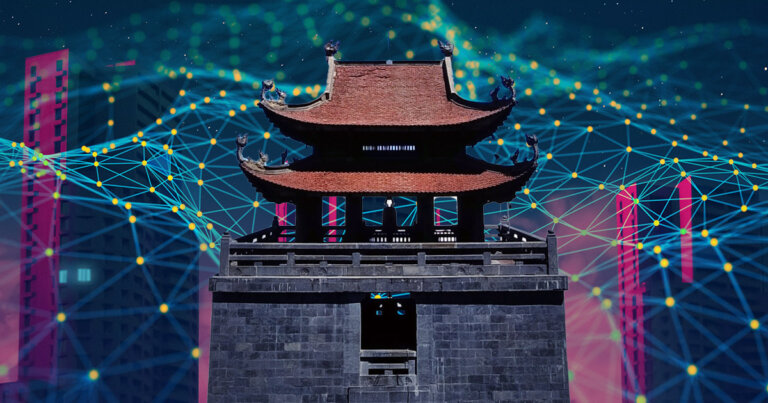 Op-ed: It’s now or never for Asia’s TradFi to engage with web3
Op-ed: It’s now or never for Asia’s TradFi to engage with web3 Op-ed: It’s now or never for Asia’s TradFi to engage with web3
With such a groundswell of innovation and adoption within the APAC region, it could be now or never for TradFi to embrace Web3.

Cover art/illustration via CryptoSlate. Image includes combined content which may include AI-generated content.
The following is a guest post from BTSE CEO Henry Liu.
When it comes to grassroots retail crypto adoption, Asia is a standout global leader. In fact, Vietnam topped Chainalysis’ 2022 Geography of Cryptocurrency report. Yet for Asia’s traditional finance (TradFi) institutions, it’s a different story. Banks and financial institutions in the world’s most populous continent are lagging behind their global peers in embracing blockchain technologies.
With such a groundswell of innovation and adoption within the APAC region, it could be now or never for TradFi to embrace Web3. Bear cycles prove the best time for building, and TradFi institutions could find themselves left behind for good by the time the next bull run comes around.
Let’s start on the payments side. This infrastructure is mission-critical for crypto to go mainstream truly. The general trend sees TradFi payments giants teaming up with crypto-native firms, usually with a licensed financial institution operating in the background.
The crypto world hears about a new payments partnership announcement every other week in Western markets. Take for example the recent news about a Binance and Mastercard prepaid crypto card in Brazil, or Huobi and Solaris launching a crypto-to-fiat card in the EU. Meanwhile, development in this space is sorely lagging in Asia. A strong example would have been Mastercard’s proposed initiatives with Thailand-based BitKub, Singapore-based Amber Group, and Australia-based Coinjar, announced in 2021. But only the latter of the three has come to fruition, indicating a low rate of success for such partnerships in the region to date.
Next, there’s also a regional gap on the investment front. Hong Kong Exchanges and Clearing recently broke new ground in December 2022 with Asia’s first crypto ETF. But these early steps come more than a year after North American exchanges launched similar products in 2021. And in a recent report, Accenture found that “two-thirds of wealth management firms in Asia have no plans to offer any form of digital asset proposition.” Instead, the report notes, Asia’s crypto investors are turning to online forums for advice.
To further accentuate the picture, Asia’s traditional firms lag even on regular digital transformation. A report from Broadridge showed APAC corporates were behind on almost every indicator, noting the influence such corporates have on the financial institutions that serve them.
It would, however, be remiss to ignore TradFi’s few bright sparks in Asia’s crypto scene. Singapore’s DBS Bank regularly tops industry polls for its innovation in blockchain applications. In Thailand, Siam Commercial Bank has demonstrated a solid commitment to Web3 through its SCB10x unit. Union Bank Philippines and Malaysia’s Kenanga are also exploring the space, among others. But on the whole, examples of homegrown Asian TradFi leadership in crypto are few and far between.
A Chance to Leapfrog?
Against this backdrop, we’re seeing emerging markets in Asia eyeing an opportunity to leapfrog developed nations’ dominance in TradFi. Many players are looking to develop the region’s own Web3 ecosystems and crypto finance systems, whether the local TradFi are onboard or not.
Take, for example, Indonesia’s cryptocurrency-focused investment app Pintu, created amid the country’s pandemic-related app boom. And, of course, there’s the world’s largest GameFi success: Axie Infinity, developed by Vietnamese studio Sky Mavis and driven by Vietnam’s deep talent pool of engineers. Another notable example is how Hong Kong-based Animoca Brands is approaching venture capital through partnerships with various Web3-native firms.
Another expression of this hope is the growing regional interest in central bank digital currencies (CBDCs). Laos recently began trials with a Japan-based blockchain company and is just one of 35 countries exploring CBDC initiatives in Asia. Perhaps certain central banks in the region are contemplating moving straight onto the blockchain while skipping the often arduous process of upgrading local TradFi infrastructure.
The question we’re left with is whether the region’s traditional institutions want or even need to catch up to their Western peers in Web3 adoption. Asia already has a mass grassroots adoption of crypto, as well as crypto-native companies that are dominating in their respective fields.
In short, Asia’s crypto scene currently has enough momentum to develop by itself, from consumer adoption, through to infrastructure development, and investment. Therefore, if Asian TradFi wants a slice of the Web3 pie, they’d better catch up by the next bull run. Otherwise, the Web3 ecosystem might not need them at all.



















































